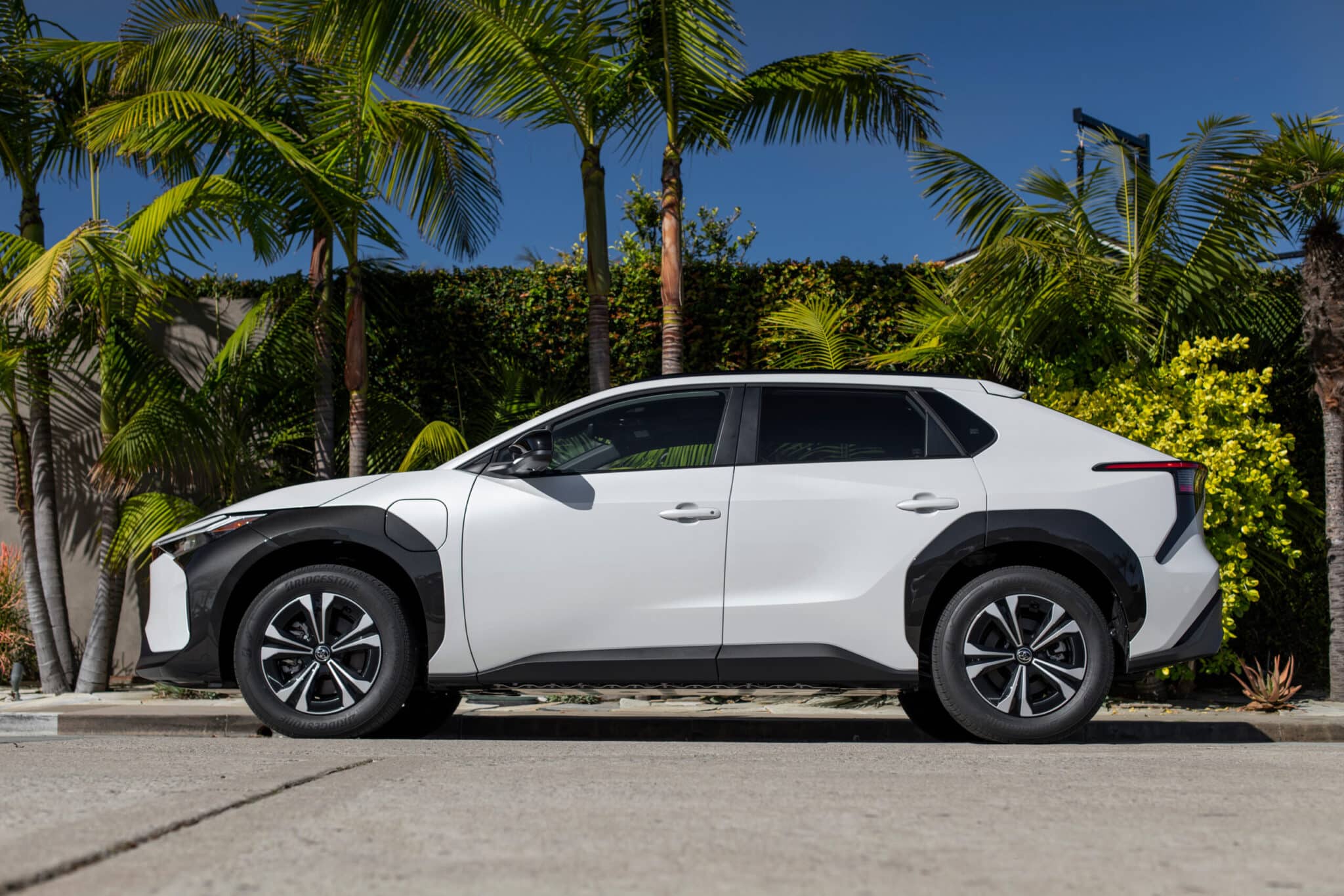With more electric vehicles and SUVs available than ever before, it’s no surprise that competition within the electric SUV segment is particularly fierce. The best models offer families the chance to lower their running costs without making sacrifices in other areas.
These vehicles combine a long driving range with high-quality, comfortable interiors and pricing that won’t strain the budget. Among the growing selection of electric SUVs, however, some models stand out while others fall short.
To help identify the best options, our team of expert reviewers evaluates electric cars across 18 different categories. We put each model through its paces over thousands of miles, both on public roads and at our dedicated test track.
There, we test each SUV side by side with its closest competitors. If any of the featured models spark your interest, you can click on the relevant links to learn more or explore the savings available through our electric SUV deals.
Kia EV3
One standout option is the Kia EV3, specifically the 148kW Air 58.3kWh 5dr Auto version. It offers zero CO2 emissions, accelerates from 0 to 62mph in 7.5 seconds, seats five passengers, and provides 460 litres of boot space.
It falls under insurance group 34D. The EV3 builds on the legacy of its predecessor, the Kia e-Niro, which was named our Car of the Year in 2019 for proving that electric cars didn’t have to be expensive.
Though slightly smaller than the e-Niro, the EV3 remains a highly practical vehicle. It offers more rear passenger space than rivals like the Jeep Avenger Electric or Mini Aceman, and is close to matching the Skoda Elroq, a model from the next size class up.
The EV3 also appeals to those who want a high driving position, delivering a true SUV experience by placing drivers noticeably higher than in alternatives like the Volvo EX30. Its ride quality is excellent, comfortably absorbing the rough surfaces of British roads.
While the Long Range model can surpass even the Tesla Model Y in driving distance, the Standard Range version, with its 55kWh battery and 270-mile official range, is likely to suit most buyers better—especially given its more affordable pricing.
The EV3 is currently available from £30,595, with potential savings of up to £2,400 and estimated finance starting at £433 per month. Leasing options begin at £371 per month, and nearly new versions start at £29,994.
Kia has lost its Soul – though not in the way you might assume. The Kia EV3 has replaced the Soul EV as the smallest electric model in the South Korean automaker’s lineup.
Positioned below the Niro EV, EV6, and EV9, the EV3 is Kia’s most compact electric SUV to date. Despite its smaller stature, it carries a strong family resemblance to its larger sibling, the EV9, reinforcing the cohesiveness of Kia’s electric vehicle design language.
On paper, the EV3 looks promising. Its base price is competitive when compared to other similarly sized electric SUVs.
Additionally, the version with the longest range boasts an official figure of up to 375 miles, which exceeds the range offered by any other electric Kia. This positions the EV3 as an appealing option within its class.
However, it enters a fiercely competitive market segment, where it must contend with strong rivals such as the Hyundai Kona Electric, Jeep Avenger Electric, and Volvo EX30. Slightly larger models like the Renault Scenic and Skoda Elroq are also likely to be considered by potential buyers.
The Kia EV3 offers a well-rounded package, combining a strong electric range, smooth ride quality, competitive entry pricing, and a generous standard equipment list. Overall, it’s an impressive small SUV.
The best value comes from the entry-level Standard Range Air trim, though for drivers who regularly travel more than 200 miles between charges, the Long Range GT-Line is worth considering.
The EV3’s positives include its attractive starting price, long driving range—particularly in the Long Range variant—and comfortable ride. However, there are a few downsides: competitors offer more versatile rear seats, the EV3 isn’t particularly agile, and its monthly PCP repayments are relatively high.
New car deals for the EV3 start from £30,595, with estimated monthly payments beginning at £433. Leasing options are available from £371 per month. A standout choice is the Kia EV3 148kW Air 58.3kWh 5dr Auto, with a recommended retail price of £33,005. This version balances features, performance, and value effectively.
In terms of performance and driving dynamics, the EV3 comes with two battery choices: the Standard Range model features a usable capacity of 55kWh, while the Long Range version offers 78kWh. As their names suggest, the major difference is in how far each can travel on a full charge.
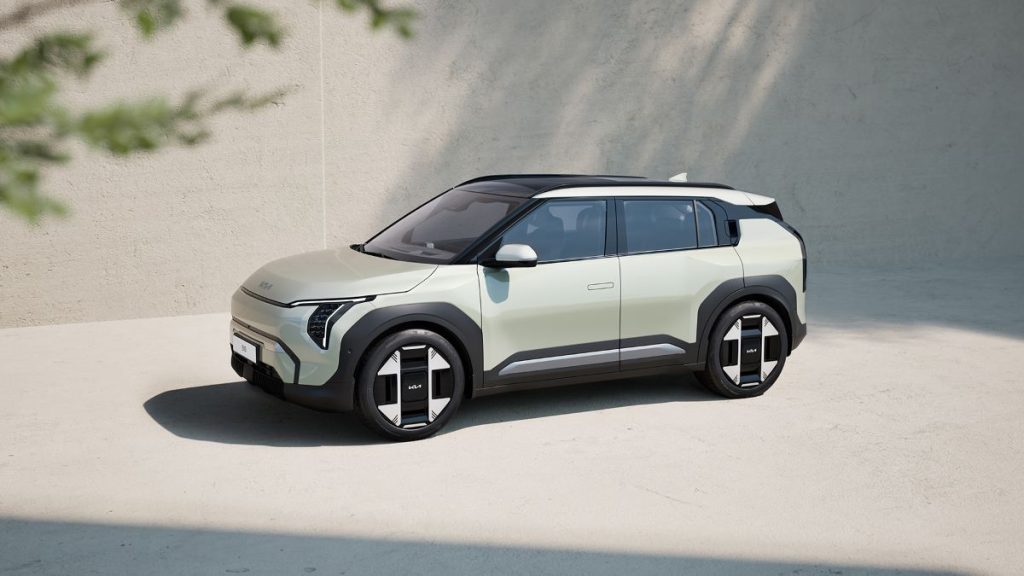
The Standard Range model has an official maximum range of 270 miles, while the Long Range model can reach up to 375 miles, depending on the trim. This places the EV3 ahead of rivals like the Hyundai Kona Electric (319 miles), Mini Aceman (251 miles), Smart #3 (283 miles), and Volvo EX30 (295 miles).
As is typical with electric cars, real-world range often falls short of official figures. Drivers can expect between 250 and 320 miles from the EV3 Long Range, depending on the conditions, including temperature and road types.
Every version of the EV3 is powered by a 201bhp motor that drives the front wheels—there is no all-wheel-drive option. This powertrain enables the car to accelerate from 0 to 62mph in approximately 7.5 seconds.
In cold, damp conditions on a private test track, the Long Range model achieved 0-60mph in 7.4 seconds. While some variants of the Smart #3 and EX30 offer quicker acceleration, the EV3’s performance is sufficient for the majority of buyers.
The EV3’s relatively soft suspension contributes to its comfortable ride quality, particularly around town and on the motorway. It compares favorably to larger models like the Renault Scenic and Skoda Elroq, and it handles road imperfections better than the Kona Electric, Aceman, Smart #1, and EX30.
One exception is the Long Range Air trim, which feels a bit bouncier and less composed. This is likely due to the combination of its heavy battery and tall-sidewall tyres.
Despite its strengths, the EV3 isn’t very agile. There’s more body roll through corners than in the Skoda Elroq or Volvo EX30, and a noticeable amount of nose dive under braking. As a result, the EV3 doesn’t perform well when pushed hard on twisty roads. However, when driven at a relaxed pace, it’s easy and enjoyable to drive.
The car also features multiple levels of regenerative braking, allowing it to harvest energy during deceleration. In its strongest setting, it supports one-pedal driving—enabling the vehicle to come to a complete stop without using the brake pedal.
For drivers who prefer traditional braking, the EV3’s friction brakes are smooth and responsive. Overall, the EV3 offers impressive refinement.
There’s no audible motor whine during acceleration, and the cabin remains quiet at cruising speeds. In fact, it’s marginally quieter on motorways than the Skoda Elroq.
Inside, the Kia EV3’s cabin mirrors the layout of the larger EV9. Both vehicles feature the same dashboard screen arrangement, with a 12.3-inch digital driver’s display behind the steering wheel, a 5.3-inch climate-control panel, and a 12.3-inch infotainment touchscreen.
The infotainment system includes ChatGPT AI voice control, which enables users to plan routes, search for music, or find dining recommendations in a more natural way than older systems allow.
However, the climate-control panel’s positioning is less than ideal. Like in the EV9, it is partially obscured by the steering wheel—an ergonomic oversight that is surprising to see repeated.
That said, physical rocker switches located lower on the dashboard allow for quick and intuitive adjustment of temperature and fan settings. This is a clear advantage over competitors like the Skoda Elroq and Volvo EX30, which rely solely on touch or voice input for climate controls.
The EV3’s touchscreen isn’t the largest in its class, but it stands out for its sharp visuals, quick responsiveness, and easy-to-use interface. It outperforms the systems in both the Skoda Elroq and Mini Aceman, and is much more user-friendly than the one in the Smart #3.
Standard features include wireless Android Auto and Apple CarPlay. Additionally, the touch-sensitive shortcut buttons below the screen are convenient, though users should be mindful not to brush them accidentally while using the display.
Also Read: 10 Vehicles That Don’t Let You Disable Auto Stop-Start
Skoda Elroq
Another compelling choice is the Skoda Elroq, particularly the 150kW 60 Edition 63kWh 5dr Auto. Like the EV3, it produces no CO2 emissions and reaches 0–62mph in 8 seconds.
It also seats five, offers 470 litres of boot space, and falls under insurance group 27E. Though it entered the electric SUV market later than some competitors, the Elroq benefits from Skoda’s refinement of the design and technology used in the larger Enyaq model.
As with many Skoda vehicles, the Elroq excels in practicality. Rear passengers enjoy generous space—even taller adults can sit comfortably behind similarly tall drivers.
The boot is large and, when paired with the optional Transport Package, becomes even more versatile. In city settings, the Elroq impresses with its small turning circle and responsive acceleration, making overtaking and manoeuvring easy.
It also performs well on the motorway, offering a calm, stable ride. Compared with the Renault Scenic, its brakes offer more consistent feedback. Additionally, with an official range of 360 miles, the Elroq is more than capable of handling longer trips.
The Elroq is also competitively priced. Even the higher-spec versions undercut their rivals significantly, making it one of the best-value electric SUVs currently on the market.
While it lacks clever rear seat configurations, physical climate controls, and includes an optional heat pump at extra cost, its strong overall performance and generous features make it a smart choice for practical buyers.
Skoda is no stranger to the medium-sized SUV segment, having produced several commendable entries since the days of the Yeti.
However, the Elroq marks Skoda’s first venture into the mid-size electric SUV category, taking inspiration from its larger sibling, the Enyaq. Much like comparing an iPod Nano to the original iPod, the Elroq builds on the Enyaq’s formula, offering a similar experience wrapped in a more compact design.
Positioned as an alternative to vehicles like the Kia EV3, Renault Scenic E-Tech, and Peugeot E-3008, the Elroq doesn’t try to stand out with bold styling. In fact, while it’s certainly a handsome and futuristic-looking vehicle, it does so in a restrained and rather plain manner.
A design first for Skoda, the Elroq features slim headlights that connect across the front to a small, blanked-off ‘grille’ known as the Tech Deck. This element conceals all of the car’s cameras and sensors, giving the front a clean and streamlined appearance.
The sharp lines and well-placed creases around the bodywork add a touch of sophistication, but ultimately, there’s little about the Elroq’s design that grabs immediate attention or sets it apart from the crowd.
From a technical standpoint, the Elroq offers a compelling electric package. It delivers a range between 232 and 355 miles depending on the battery configuration, with an efficiency rating of 4.0 miles per kWh.
Battery sizes range from 52kWh to 77kWh, while the maximum charge speed is 175kW. When charging via AC, it takes between 7 hours 33 minutes and 12 hours to reach full capacity using a 7.2kW home charger.
DC rapid charging from 10 to 80 percent can be completed in 25 to 28 minutes at a maximum rate of 128kW. The charge port is located on the rear right of the vehicle, and available power outputs include 170hp, 204hp, and 286hp.
Inside, the Elroq closely mirrors the Enyaq in terms of design, which is a positive point. The dashboard is sleek and minimalist, curving down toward the centre console beneath the large infotainment screen.
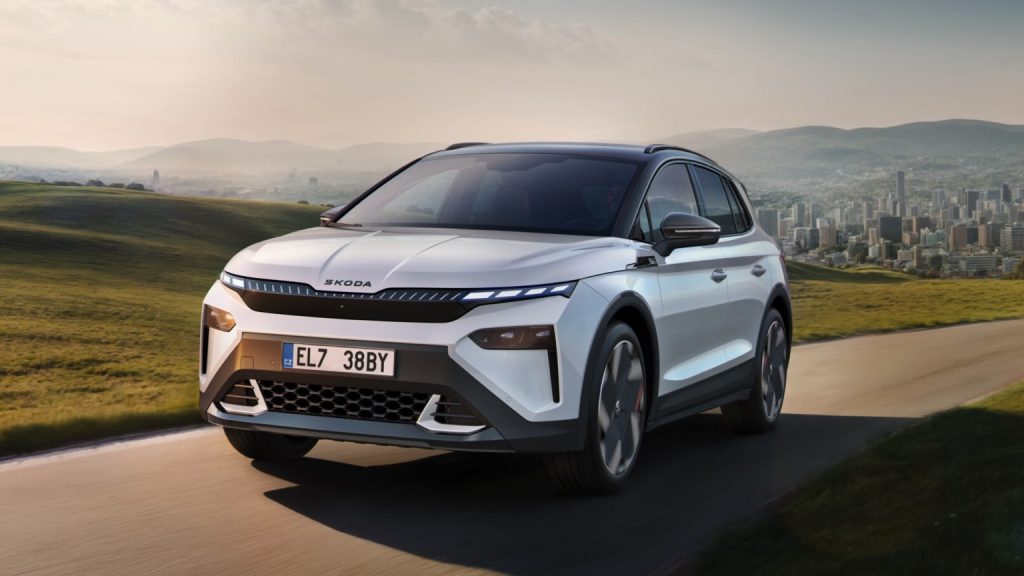
Buyers can choose between a denim-like fabric or leatherette trim for the dashboard in higher-spec models, with the fabric providing a more playful and distinctive look.
The cabin also benefits from Skoda’s hallmark attention to detail, evident in features such as supportive seats, a well-positioned driving setup, ample adjustability, and a crisp driver display.
These qualities help reinforce the brand’s ‘Simply Clever’ tagline. Additional thoughtful touches include modular and removable storage solutions like configurable cup holders, door-mounted umbrellas, and even a standard-fit ice scraper.
Despite being smaller than the Enyaq, the Elroq remains impressively practical. It doesn’t offer a front trunk like the Tesla Model Y or boast as much cargo capacity as the Peugeot E-3008, but its 470-litre boot is more than adequate for a family’s daily needs.
There’s also hidden storage under the boot floor, allowing smaller items to be kept safely out of sight. Perhaps most notably, the Elroq carries a lower price tag than some of its competitors, enhancing its value proposition for budget-conscious EV buyers.
“You can choose from three battery options for the Elroq, but they’re spec-dependent. Entry level ‘50’ cars have a 52kWh battery capacity and an official range of 232 miles. There’s also a ‘60’ mid-range model, but Edition and Sportline cars can be had with a 77kWh battery and 355 miles of range.”
On the road, the Elroq provides a soft, cushioned ride, thanks to its compliant suspension setup and large tyres. It handles uneven roads well and delivers a quiet, smooth driving experience under most conditions.
However, larger road imperfections can temporarily unsettle the vehicle, causing it to feel unsteady until the suspension regains its balance.
The light steering makes city driving and parking easy, and the Elroq remains calm and composed during highway cruising, though it can feel slightly floaty when encountering larger undulations.
When it comes to handling on twisty roads, the Elroq doesn’t particularly excel. The car doesn’t feel especially grippy in faster corners, and the light steering contributes to a vague, disconnected feel. Fortunately, body roll is minimal, but the overall impression is that winding country roads are best approached with a relaxed, moderate driving style.
Smart #3
Despite what its name might imply, the Smart #3 is actually the second model in the brand’s revamped lineup. And while it may appear to be simply a #1 with a sleeker roofline, there’s more to it than that.
Although it shares many components with its sibling, the #3 is both longer and wider, leading to practical benefits that go beyond its stylish appearance.
That added size translates into a larger boot, making the #3 a more practical choice for families. It also retains generous rear-seat space and features an interior crafted with premium materials and modern technology.
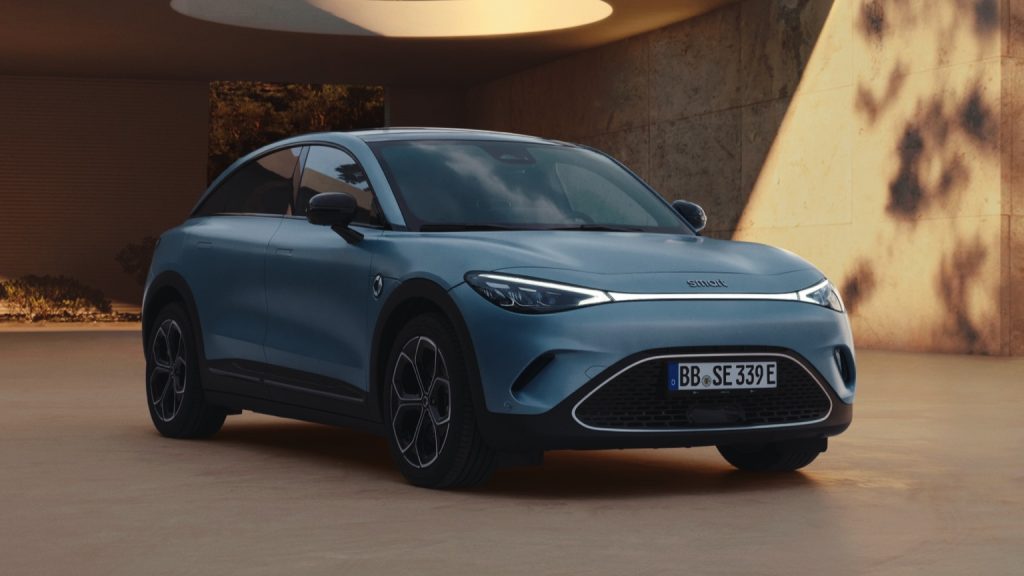
Not only is the #3 better to drive than the #1, but it also offers a slightly longer range—officially 283 miles in the recommended trim. Surprisingly, it comes at only a slightly higher price than the #1, and is still more affordable than coupé-style SUV rivals such as the Skoda Enyaq Coupé and Volvo EC40.
The model we recommend is the 200kW Premium 66kWh 5dr Auto, which delivers a 0–62mph time of 5.8 seconds, zero CO₂ emissions, seats five people, and offers 370 litres of boot space.
It belongs to insurance group 36E. The Smart #3 is currently available with price of £33,960, with finance starting from an estimated £369 per month. Leasing options begin at £358 per month, and nearly new versions are available from £24,650.
Renault Scenic
Initially, the newest version of the Renault Scenic struggled with a ride that was too firm, but Renault has since adjusted the suspension, greatly improving ride comfort.
While this update means you’ll experience more body roll in corners compared to some competitors, the Scenic still offers plenty of grip and benefits from precise steering, making it easy to position the front end exactly where you want it.
The Scenic’s appeal is further enhanced by its spacious, well-made interior, which includes thoughtful family-friendly details.
Opt for the larger battery version and you’ll enjoy an impressive official range of up to 379 miles. Though it’s not the quickest electric SUV out there, it’s competitively priced and carries a five-star Euro NCAP safety rating.
“The Scenic’s standard panoramic glass roof can be turned opaque at the touch of a button.
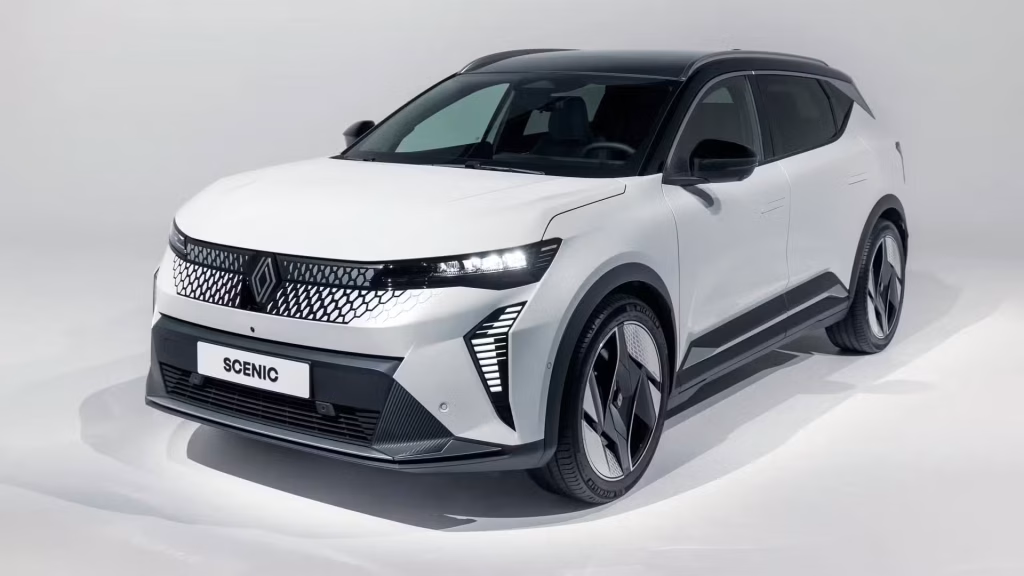
But as a parent, I think the best thing about it is the way it’s divided into individually controllable segments so you can keep your children cool on hot days by covering the back seats in shade, while you enjoy the sun in the front.”
The model we recommend is the 160kW Techno 87kWh Long Range 5dr Auto. It accelerates from 0 to 62mph in 7.9 seconds, emits no CO₂, seats five, and offers a generous 545 litres of boot space.
The Scenic falls under insurance group 33E. You can find new Scenic deals from £34,190, with potential savings up to £3,211. Monthly finance starts at around £294, leasing from £278 per month, and nearly new models from £30,990.
Also Read: 10 Cars With Best Dash Designs That Bring Innovation
Genesis GV60
The Genesis GV60 takes the solid foundation of the acclaimed Kia EV6 and enhances it with a premium touch befitting the upmarket ambitions of the Genesis brand. It combines high performance with sophistication, offering a maximum range of up to 321 miles and ultra-fast charging capability—allowing a 10% to 80% charge in as little as 20 minutes.
Beyond its impressive powertrain, the GV60 stands out for its luxurious and whisper-quiet interior, as well as a superb infotainment system.
While it does cost more than the EV6, it compensates with an array of standard features, including wireless phone charging, dual-zone climate control, and adaptive cruise control.
However, it’s worth noting that the boot isn’t the biggest in its class, rear space is average, and the optional camera-based mirrors aren’t as effective as traditional ones.
The version we recommend is the 168kW Premium 77.4kWh 5dr Auto [Comfort], which reaches 0–62mph in 7.8 seconds, delivers zero CO₂ emissions, seats five, and has a boot capacity of 432 litres.
It’s categorized under insurance group 41A. Overall, the GV60 offers a polished electric SUV experience for those willing to pay a bit more for luxury and refinement.
In music, your first single can either launch you to stardom or flop and end your career. Similarly, when Genesis (the car brand, not the band) introduced the Genesis GV60—its first fully dedicated all-electric model—it was naturally hoping for a major success.
However, Genesis couldn’t have chosen a more competitive segment of the electric car market to enter. The GV60’s size and shape place it firmly in the electric SUV class, where it faces numerous well-established rivals.
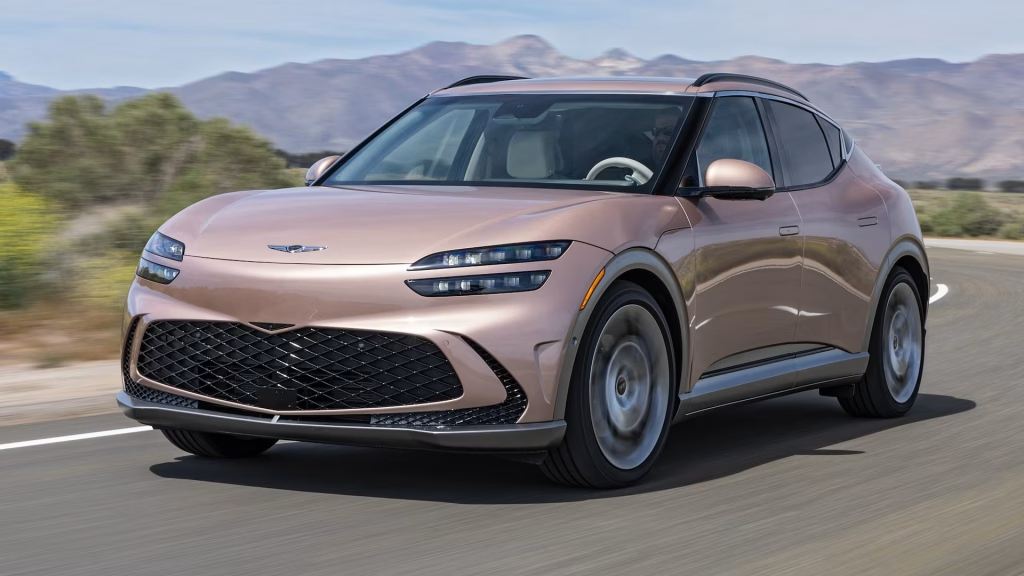
Fortunately, Genesis didn’t have to start from zero. As the luxury division of the Hyundai Group, the GV60 shares close ties with the Hyundai Ioniq 5 and Kia EV6, featuring proven technology, including the same electric platform known as E-GMP.
However, the GV60 is far more than just an Ioniq 5 or EV6 with a different exterior. Genesis has crafted the GV60 to provide a more luxurious experience, with an interior unlike almost anything else on the market.
That sounds promising, but is the Genesis GV60 strong enough to outshine its siblings and other competitors like the Nissan Ariya, Tesla Model Y, and Volkswagen ID.4? Read on to discover how it stacks up against the top electric SUVs.
The Genesis GV60 is an impressive electric vehicle with a luxurious interior. In fact, it’s the best model we’ve seen so far from the relatively new UK presence of the brand.
If you decide to buy one, we recommend the entry-level Premium model for the best value for money, though it’s worth noting that the mechanically similar Kia EV6 will cost you a bit less. Its pros include a wonderful interior, being extremely quiet on the move, and having a great infotainment system.
On the downside, the boot space isn’t huge, rear passenger space is average, and the optional camera mirrors don’t quite match the quality of traditional door mirrors.
The GV60 comes in three trims: Premium, Sport, and Sport Plus, all equipped with a 77.4kWh usable battery capacity. The Sport Plus is the most powerful, featuring an electric motor on each axle to provide all-wheel drive.
However, it isn’t as agile as the Tesla Model 3. Despite this, the GV60’s luxurious interior and smooth power delivery make it a strong contender in the competitive electric SUV market.
5 Electric SUVs that fall short in Range
Electric SUVs are gaining popularity at a rapid pace, offering families the promise of zero-emissions driving, low running costs, and the practicality of a high-riding vehicle.
But not all models deliver when it comes to one of the most important factors: range. While some EVs can comfortably cover hundreds of miles between charges, others fall short—sometimes far short—of expectations.
In this article, we take a look at five electric SUVs that underperform in driving range, making them less ideal for long-distance travel or those without easy access to frequent charging.
Mazda MX-30
Official WLTP range: 124 miles
Despite its stylish looks and refined handling, the Mazda MX-30 suffers from a very limited driving range. Its small 35.5kWh battery severely restricts its usability, especially when many competitors offer nearly double the range for similar prices.
The 2023 Mazda MX-30 stands out for having one of the shortest driving ranges among modern electric vehicles—a characteristic not seen since the early days of EVs like the first-generation Nissan Leaf.
This significant limitation severely restricts the appeal of this otherwise stylish small crossover. Most of the MX-30’s competitors can travel over 200 miles on a single charge and offer quicker acceleration, making the Mazda’s performance and range appear outdated by comparison.
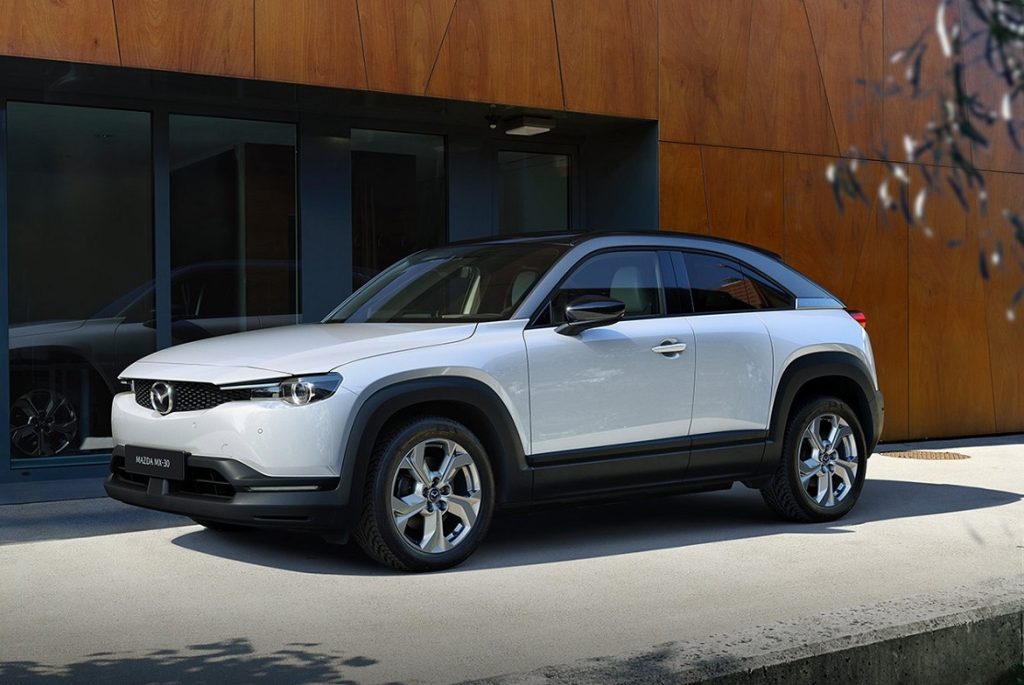
Nevertheless, the MX-30 does offer a few redeeming features, such as its environmentally conscious interior materials, eye-catching coupe-like design, and an affordable starting price. In fact, it is roughly $5000 cheaper than rivals like the Kia Niro EV and the Volkswagen ID.4.
Despite these positives, the MX-30 is only available for purchase in California and in very limited quantities. For drivers who stay close to home and don’t require long-range capability, the MX-30 might serve as a reasonable choice.
However, given the pace at which the electric vehicle market is evolving, it’s easy to understand why the MX-30 failed to gain a lasting foothold among more advanced and competitive models.
While nothing has changed for the MX-30 EV in 2023, Mazda has confirmed that this will be the model’s final year. Globally, the CX-30 will continue with an R-EV range-extender variant that incorporates a rotary engine to recharge the battery.
Honda e:Ny1
Official WLTP range: 256 miles
While not terrible on paper, the Honda e:Ny1 struggles in real-world conditions, with reports showing significantly lower range than claimed. Combined with a relatively high price and average efficiency, it’s not the most convincing package.
The first challenge with the Honda e\:Ny1 is figuring out how to pronounce its name—according to Honda, it’s “ee en why one.”
If you can get past the awkward naming, you’ll discover that Honda’s only fully electric car currently on sale does have some commendable qualities. However, overall, it represents relatively poor value when compared to other options in the same price range.
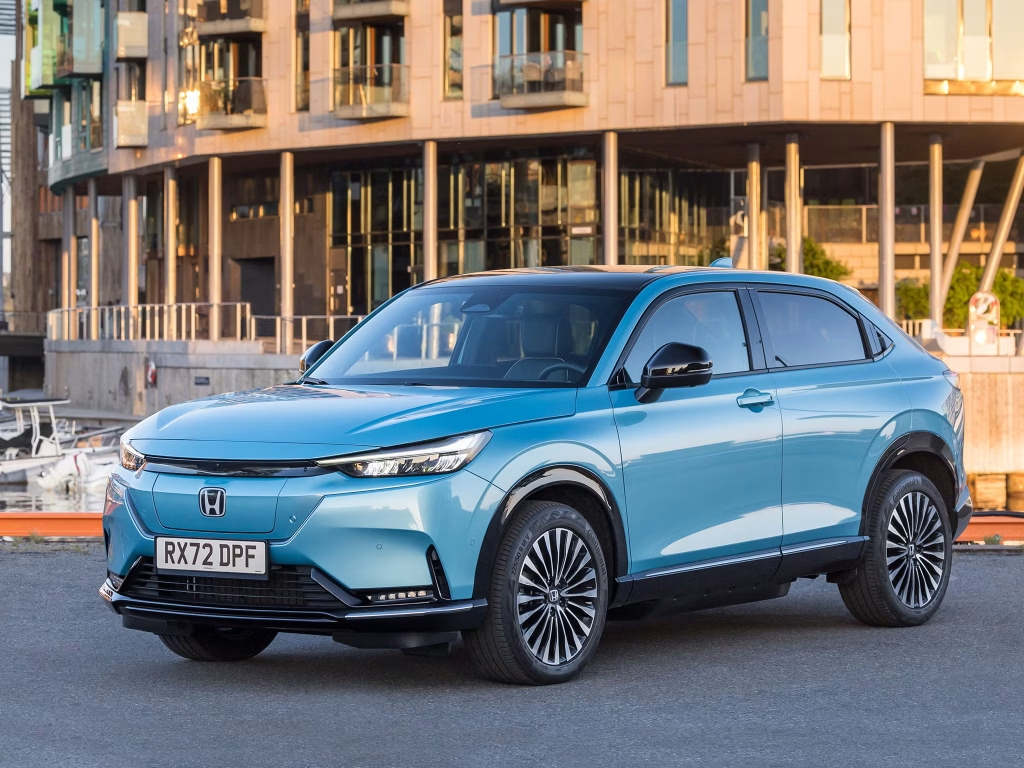
The main issue with the e\:Ny1 lies in the fact that there is a wide selection of excellent electric cars available for roughly the same cost.
Vehicles like the Skoda Elroq, Kia EV3, Renault Scenic E-Tech, Volvo EX30, MG S5 EV, and even the Tesla Model 3 can be had for similar or even lower prices. This makes the e\:Ny1 seem outmatched, like an under-14s rugby player facing off against all 15 of the All Blacks.
At a quick glance, you might think the e\:Ny1 is simply an electric version of the Honda HR-V, as the two share a strikingly similar design.
But in reality, every single body panel is different. Visually, it’s not an unattractive vehicle—while it may not turn heads in a crowd, the front end has slightly more character than some of its competitors. The sloping tailgate and hidden rear door handles also add a touch of visual appeal.
Smart #1
Official WLTP range: 260 miles
Although packed with technology and offering a quality interior, the Smart #1’s real-world range often disappoints due to its high power output and efficiency shortfalls, especially when driven in mixed or motorway conditions.
This is the smart #1. And yes, you’re supposed to say “Hashtag One” in full—like someone who’s just discovered this wild new invention called ‘The Internet.’ Of course, we won’t do that; we’ll just call it the ‘One,’ like any normal functioning human being.
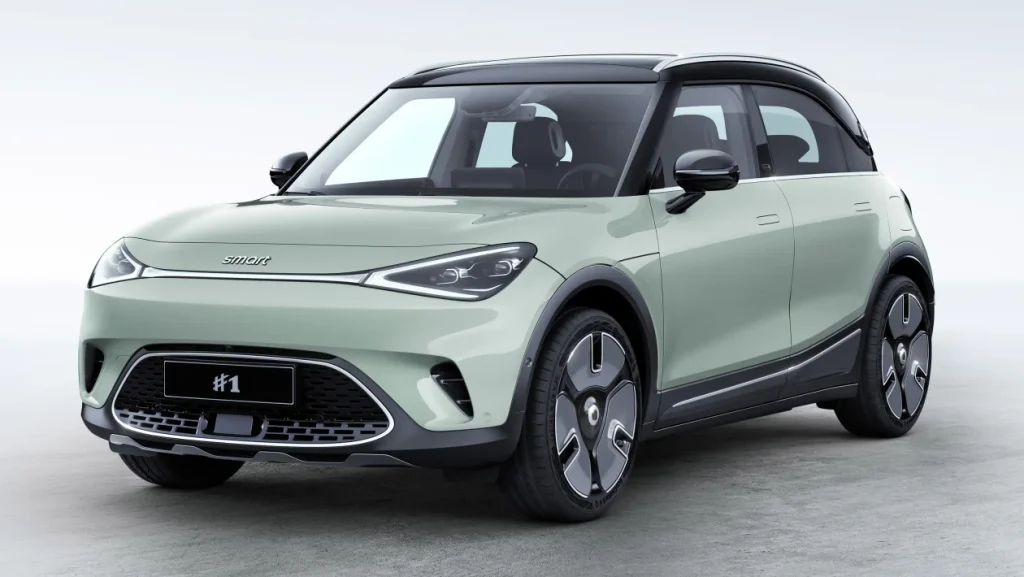
Now, we need to unpack Smart’s backstory a bit. Smart means the ForTwo, right? That tiny urban two-seater everyone once hailed as the future of city mobility, but then not enough people actually bought it to keep it viable.
It was originally a joint project with Swatch (the watch company), but then Mercedes took control and brought in outside partners to help.
The first four-seater, the ForFour, was a joint venture with Mitsubishi. There were other models too—the quirky Crossblade and the well-liked Roadster—but Mercedes never seemed fully committed to the brand.
Still, it couldn’t bring itself to abandon Smart, even though it has consistently lost money. The ForTwo and ForFour have soldiered on through multiple facelifts and reinventions, including switching to fully electric powertrains from 2019 onward.
Mercedes-Benz EQB 250
Official WLTP range: 248 miles
For a premium SUV, the EQB’s range is underwhelming—particularly given its size and price. Its relatively small usable battery and less efficient design result in more frequent charging stops than many buyers would expect from a Mercedes.
While Mercedes EVs such as the EQE sedan/SUV and the EQS sedan/SUV are purpose-built electric vehicles with no gas-powered counterparts, the EQB is essentially a gasoline-powered model converted to run on electricity.
It carries over much of what we appreciate about the GLB-class SUV, including its space-efficient layout and well-crafted interior, while eliminating tailpipe emissions in the process.
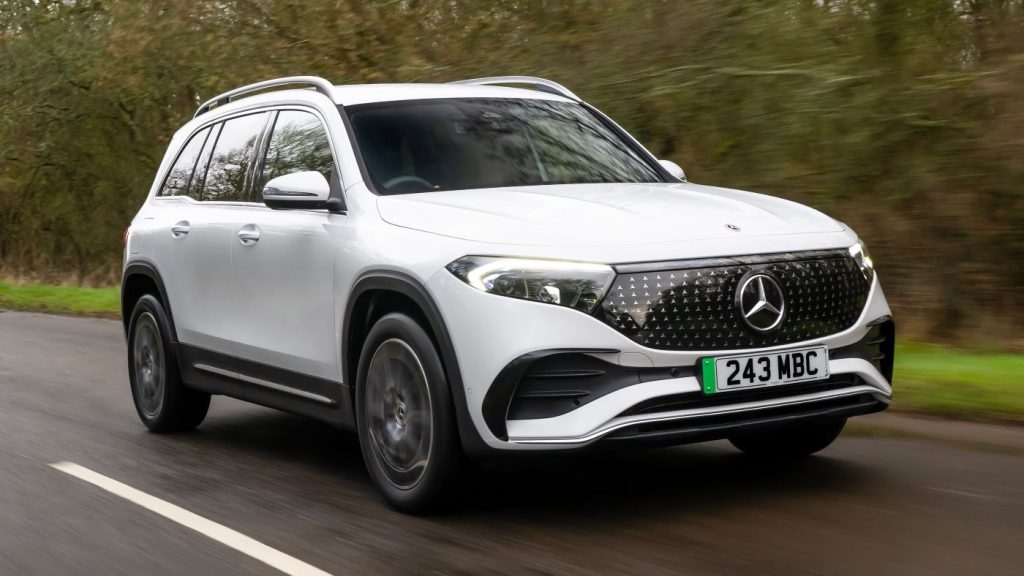
The EQB is available with three different powertrains, ranging from a more economical front-wheel-drive version to the more powerful all-wheel-drive EQB350, which produces 288 horsepower. The EPA-estimated range varies from 205 to 251 miles, and the vehicle is capable of relatively quick recharging when connected to a DC fast charger.
While the EQB does sacrifice some cargo space compared to the GLB due to the placement of its 66.5-kWh battery, it still remains a practical choice among compact SUVs. Competitors include the Audi Q4 e-tron, which offers a less engaging drive, and the smaller Genesis GV60.
Toyota bZ4X (FWD version)
Official WLTP range: 317 miles (FWD)
While the figure might seem decent, the bZ4X has been widely criticized for its real-world performance, with actual ranges sometimes falling below 250 miles. Cold weather range drops and slow charging rates also add to the disappointment.
There are two versions of the Toyota bZ4X available, and we believe the single-motor, front-wheel-drive model will be quick enough for most drivers. In our tests, it accelerated from 0-60mph in 7.1 seconds—slightly faster than the Kia EV6 Air.
The all-wheel-drive (AWD) version is quicker, but not by as much as you might expect, mainly because it carries more weight. Its official 0-62mph time is 6.9 seconds, which is fast compared to a petrol or diesel family SUV, but nowhere near the rapid acceleration of the Kia EV6 AWD or Tesla Model Y Long Range.
Whichever version you choose, the bZ4X’s smooth power delivery encourages a relaxed driving style, perfectly matching its personality. The suspension is noticeably softer than that of the Model Y, providing a more supple ride. Comfort levels are roughly comparable to the EV6.
Thankfully, this comfort doesn’t come at the expense of handling. The bZ4X handles corners fairly well without excessive body lean. While it’s not quite fun to drive and isn’t as agile as the lower-slung EV6, it still holds an advantage over the VW ID.4.

This is especially evident in the natural feel of the steering and the brake pedal, which makes it easier to judge how much pressure to apply for smooth braking—a task it performs better than the ID.4.
Refinement is decent, with less road and suspension noise than the Tesla Model Y, although the Hyundai Ioniq 5 and Kia EV6 are quieter electric vehicles overall.
Regarding range, all bZ4X versions come with the same 64kWh usable battery capacity. The more efficient front-wheel-drive version can officially travel up to 318 miles, depending on the trim.
In our tests, its efficiency was slightly behind the EV6 RWD and Ford Mustang Mach-E Standard Range RWD, suggesting a real-world range closer to 250 miles, depending on temperature and driving style. The AWD bZ4X can officially manage up to 286 miles per charge, but during our long-term test, it achieved just over 200 miles.

